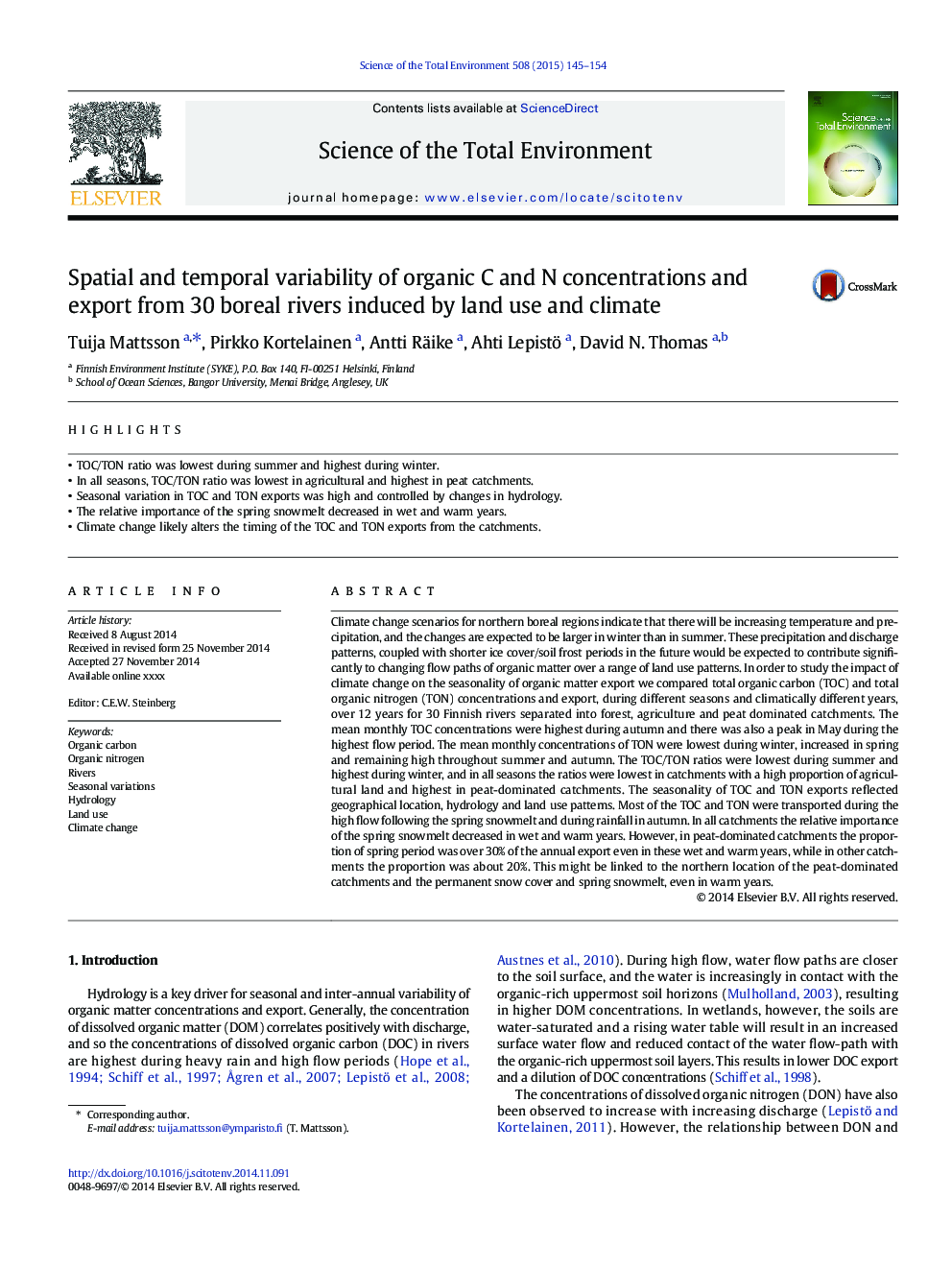| کد مقاله | کد نشریه | سال انتشار | مقاله انگلیسی | نسخه تمام متن |
|---|---|---|---|---|
| 6327846 | 1619768 | 2015 | 10 صفحه PDF | دانلود رایگان |
عنوان انگلیسی مقاله ISI
Spatial and temporal variability of organic C and N concentrations and export from 30 boreal rivers induced by land use and climate
دانلود مقاله + سفارش ترجمه
دانلود مقاله ISI انگلیسی
رایگان برای ایرانیان
کلمات کلیدی
موضوعات مرتبط
علوم زیستی و بیوفناوری
علوم محیط زیست
شیمی زیست محیطی
پیش نمایش صفحه اول مقاله

چکیده انگلیسی
Climate change scenarios for northern boreal regions indicate that there will be increasing temperature and precipitation, and the changes are expected to be larger in winter than in summer. These precipitation and discharge patterns, coupled with shorter ice cover/soil frost periods in the future would be expected to contribute significantly to changing flow paths of organic matter over a range of land use patterns. In order to study the impact of climate change on the seasonality of organic matter export we compared total organic carbon (TOC) and total organic nitrogen (TON) concentrations and export, during different seasons and climatically different years, over 12Â years for 30 Finnish rivers separated into forest, agriculture and peat dominated catchments. The mean monthly TOC concentrations were highest during autumn and there was also a peak in May during the highest flow period. The mean monthly concentrations of TON were lowest during winter, increased in spring and remaining high throughout summer and autumn. The TOC/TON ratios were lowest during summer and highest during winter, and in all seasons the ratios were lowest in catchments with a high proportion of agricultural land and highest in peat-dominated catchments. The seasonality of TOC and TON exports reflected geographical location, hydrology and land use patterns. Most of the TOC and TON were transported during the high flow following the spring snowmelt and during rainfall in autumn. In all catchments the relative importance of the spring snowmelt decreased in wet and warm years. However, in peat-dominated catchments the proportion of spring period was over 30% of the annual export even in these wet and warm years, while in other catchments the proportion was about 20%. This might be linked to the northern location of the peat-dominated catchments and the permanent snow cover and spring snowmelt, even in warm years.
ناشر
Database: Elsevier - ScienceDirect (ساینس دایرکت)
Journal: Science of The Total Environment - Volume 508, 1 March 2015, Pages 145-154
Journal: Science of The Total Environment - Volume 508, 1 March 2015, Pages 145-154
نویسندگان
Tuija Mattsson, Pirkko Kortelainen, Antti Räike, Ahti Lepistö, David N. Thomas,